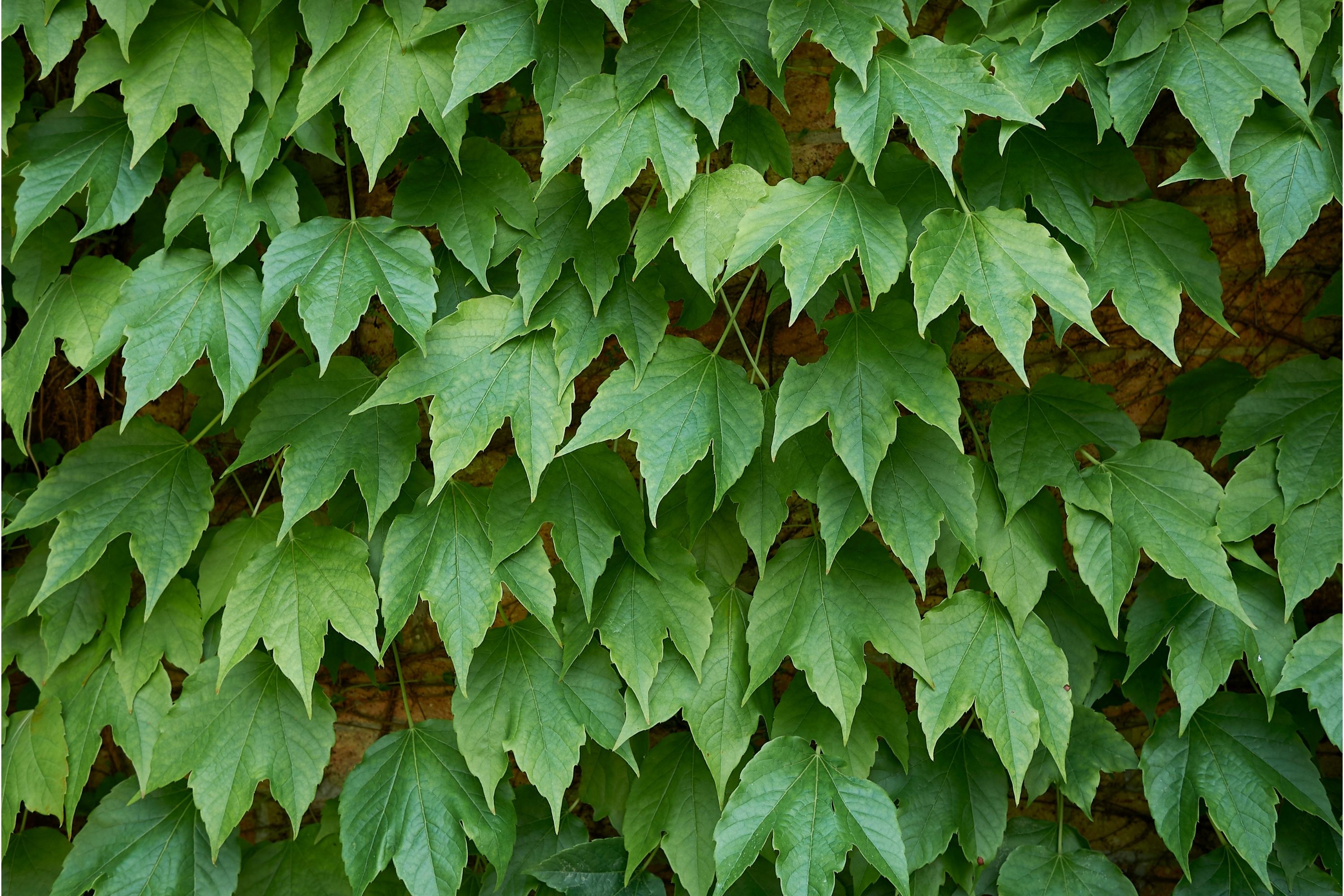Thicket creeper
(Parthenocissus vitacea)

Description
Parthenocissus vitacea, commonly known as the woodbine vine, is a species of flowering plant belonging to the Vitaceae family. This fast-growing deciduous vine is native to North America and is commonly found in the eastern United States and Canada. It is a hardy plant that can adapt to a variety of conditions and is often used in landscaping and garden designs due to its attractive foliage and ability to quickly cover vertical surfaces. In this article, we will take an in-depth look at the characteristics, growing conditions, and uses of Parthenocissus vitacea. Taxonomy and Nomenclature The scientific name of Parthenocissus vitacea is derived from the Greek words "parthenos," meaning virgin or unmarried, and "kissos," meaning ivy. This refers to the fact that the vine does not produce flowers or fruit, despite its close resemblance to true ivy plants. The species name "vitacea" is derived from the Latin word "vitis," meaning grapevine, which is fitting given the plant's close relationship to the Vitaceae family. Description Parthenocissus vitacea is a fast-growing deciduous vine that can reach heights of up to 30 feet or more. It has a woody stem with tendrils that allow it to climb and attach to surfaces, such as walls, fences, and trellises. The leaves are palmately compound, meaning that they are composed of several leaflets that radiate out from a central point. The leaflets are typically ovate to lanceolate in shape and can range in size from 1 to 4 inches long. The foliage of Parthenocissus vitacea is one of its most attractive features. The leaves are bright green during the growing season and turn a brilliant crimson or deep purple in the fall, providing a stunning display of autumn color. In addition to its foliage, the woodbine vine produces small green flowers in the early summer, although they are inconspicuous and typically go unnoticed. Growing Conditions Parthenocissus vitacea is a hardy plant that can tolerate a wide range of growing conditions. It is well-suited to USDA hardiness zones 4-9, which covers most of the eastern United States and parts of Canada. The plant prefers full sun to partial shade and can grow in a variety of soil types, although it does best in well-draining, fertile soil. One of the key advantages of Parthenocissus vitacea is its ability to tolerate drought and poor soil conditions. It is also resistant to most pests and diseases, making it a low-maintenance option for gardeners and landscapers. However, the plant can be invasive in some areas and should be monitored closely to prevent it from spreading beyond its intended area. Uses Parthenocissus vitacea is a versatile plant that can be used in a variety of ways in landscaping and garden designs. One of its primary uses is as a climbing vine to cover vertical surfaces, such as walls, fences, and trellises. The plant's rapid growth and ability to cling to surfaces make it an ideal option for creating a natural-looking screen or privacy wall. In addition to its use as a climbing vine, Parthenocissus vitacea can also be used as a ground cover or in container gardens. Its attractive foliage and low-maintenance requirements make it a popular choice for homeowners and landscapers looking for a plant that can provide color and interest throughout the growing season. Conclusion Parthenocissus vitacea is a hardy, low-maintenance plant that is well-suited to a variety of growing conditions. Its attractive foliage and ability to quickly cover vertical makes it very popular for home gardens.
Taxonomic tree:







